 Written by Mike Price, OT
Written by Mike Price, OT
As a life-saving procedure performed approximately 100,000 times a year in the U.S., ostomy surgery is utilized to treat a variety of medical conditions.
Sometimes indicated for inflammatory bowel disease, cancer, diverticulitis, bowel obstruction, infection, birth defects, incontinence, and a host of other medical issues, ostomy is a life-saving procedure that helps people live healthy lives despite a range of conditions or injuries.
When the urinary or digestive systems are not moving things along like they should, ostomy procedures enable bodily waste such as feces and urine to exit the body through alternate, surgically-created openings called stomas.
Depending on what body system is involved, stomas are located on the left or right of the abdominal area, and attach internally to either the small or large intestines, or to the ureters of the kidneys.
Externally, stomas connect to prosthetic receptacles called pouches, or bags, that collect the waste, bypassing the usual internal digestive or urinary routes.
The types of ostomies performed vary, but the most common are:
Ostomy surgery may be required at any age, and it could be temporary, to help patients eliminate properly while healing from acute conditions or injuries, or employed as a more permanent fix for more severe situations.
Although living with a stoma and eliminating in alternate ways can seem overwhelming at first, it’s important to remember you are not alone - there are about 725,000 to 1 million people in the U.S. living with a stoma from ostomy surgery. And unlike the solutions of old, modern ostomy pouching systems and their attendant accessories are discreet, odor-proof, and sturdy.
Following ostomy surgery, most people can still do everything they did before, including swimming, sports, working, and enjoying relationships.
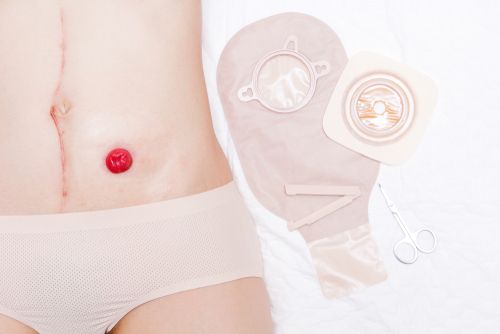
Ostomates (the term people who have ostomies apply to themselves) new to the world of ostomy supplies must learn how to use them correctly.
Also known as prosthetics or appliances, ostomy pouches, skin barriers, flanges, and kits will be the devices you are changing and maintaining yourself, so it’s important to get familiar with their basic design.
While you’re typically given some ostomy supplies to start with from the hospital following your ostomy procedure, it’s important to understand that you are not required to keep using these particular brands or styles if you’re not happy with them.
If the system you’re using is leaking, uncomfortable, creating skin irritation, or emitting odors, it’s not the right ostomy system for you.
You can always talk with your doctor or WOC (Wound, Ostomy, Continent) nurse to help you find the right configuration. But, just to help out, we’ve compiled our extensive ostomy research to help guide you in finding everything you require to meet your daily needs.
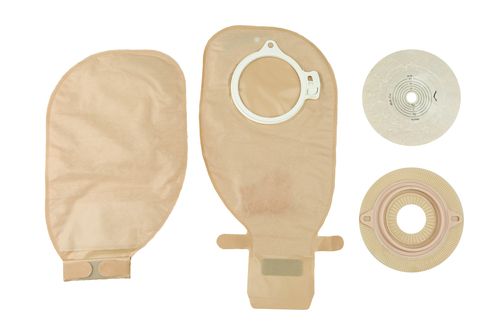
Ostomy bags collect stool or urine by attaching to the outside of the stoma and sitting against the skin.
These pouches are available in a wide range of sizes and designs to accommodate different users and a variety of activities. Smaller pouches are designed for intimacy or swimming, while larger sizes are better for everyday wear, or for night use, so the bag doesn’t need to be changed or emptied, interrupting sleep.
One of the most important considerations in choosing supplies following an ostomy surgery is determining whether you need a one-piece or two-piece pouching system.
One-piece ostomy bag systems permanently attach the skin barrier to the collection bag. When the bag needs to be changed, the bag and skin barrier are removed, and simply discarded into a receptacle.
Two-piece ostomy bag systems, on the other hand, allow the bag to be detached from the skin barrier so that they can be independently replaced, emptied, and cleaned without having to remove the skin barrier.
One-piece ostomy systems are easier for people with vision impairments, arthritis, and other conditions affecting hand strength and coordination. But removing the skin barrier every time the bag is full can present more risk of skin irritation or infection.
Two-piece ostomy systems are generally preferred by users with more waste output, while they also offer improved convenience in attaching variously sized bags for different activities. The skin barrier can easily stay in place for several days, reducing the risk of skin irritation.
However, one-piece pouching systems tend to lie flatter against the skin, and provide a quick and easy change. Two-piece pouching systems are a bit more visible under clothing, and will tend to take a little longer to change, or to drain and clean.
Another crucial choice for ostomy pouches is figuring out whether you need a closed bag or a drainable bag.
Closed-end ostomy bags are sealed pouches meant to be disposable. You use them one time and then throw them away. Drainable ostomy bags, on the other hand, have a built-in or attached closure mechanism which allows them to be emptied, cleaned, and reused.
Closed bags are usually the only type usable with one-piece ostomy systems, while both drainable and closed types can be used with two-piece systems.
Closed pouches are a good choice for excursions away from home, as they offer quick changes along with convenient disposal. Drainable pouches, however, are the better choice for frequent output, and for permanent, long-term ostomy needs as they tend to be more cost-effective.
Also known as wafers, ostomy barriers, and flanges, the skin barriers used in ostomy care come in a vast assortment of styles, sizes, and configurations to accommodate the wide range of body and stoma shapes and sizes.
Attaching to the stoma and area surrounding it, skin barriers are separate units in two-piece systems, and are included as a connected, all-in-one piece with the pouch in one-piece systems.
They can be soft and malleable or rigid, dependent on specific user requirements, as well as flat or convex. Some skin barriers come with pre-cut openings, while others can be cut to fit.
While many two-piece systems come with their own skin barrier, these barriers can also be purchased separately to better customize the fit and use. Some already come with adhesive backing, while others may require an additional adhesive or tape to stay in place.
Ostomates who have soft or liquid output should choose skin barriers specifically designed for resistance to liquids, while those who change their barrier more frequently, or those with sensitive skin should look for gentle adhesives to mitigate skin irritation.
Protruding stomas or deep abdominal creases tend to do better with flat barriers, while convex configurations are more suitable for flush or retracted stomas.
One of the most common concerns new ostomates have is odor control for their ostomy system.
Whether it’s odors from urine or stool, nobody wants to smell bad, and with today’s cutting edge technology, ostomy odors are a thing of the past.
Available in drops, tablets, liquids, and sprays, ostomy deodorizing products are effective at eliminating odors from your ostomy appliances.
The only time you should smell any odors is when you’re emptying the bag. If you do notice odors occurring at any other time, this indicates a problem or leakage with your ostomy bag or system.
Ostomy deodorants that also lubricate are helpful to prevent stool from sticking at the top part of the pouch.
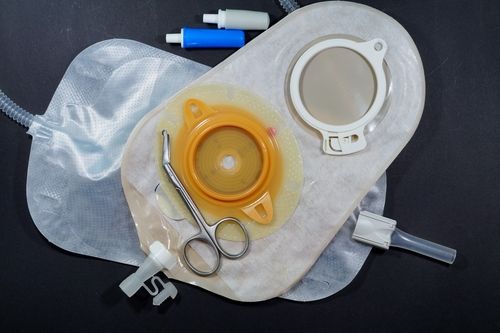
While many people living with an ostomy don’t ever require more than the pouching system and skin barrier to attend to their elimination requirements, there are a significant number of individuals who will need some specific accessories to reduce the risk of serious infection, contamination, and skin irritation sometimes associated with poor ostomy management and hygiene.
Specially formulated skin barrier pastes aid in filling in folds, crevices, and other surface irregularities of the abdominal area surrounding the stoma to ensure the best seal with the wafer of the ostomy appliance.
Liquids, powders, and wipes help to protect the skin around the stoma, mitigating skin irritation while they also enhance wafer adhesion.
When ostomy systems do not come with their own skin barrier adhesive, separately sold ostomy tapes and various forms of adhesives will keep the wafers and pouches fully supported and firmly in place. Some can also be used to protect the ostomy appliances from moisture and liquids.
Ostomy adhesive removers effectively remove any adhesive from the appliances or the skin.
Ostomy pouch covers are sometimes built-in, or can be purchased separately for added skin protection and comfort, while they can also help minimize the pouch during intimacy.
Belts can be used to wrap around the abdomen for an added stay-in-place support, or as an alternative to adhesives.
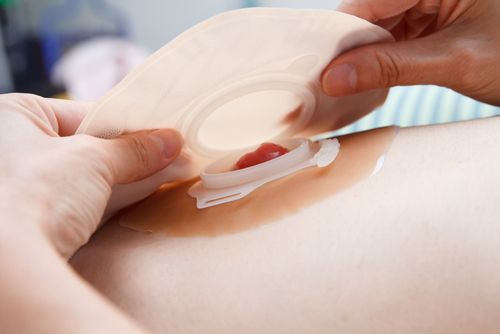
Usually, every two to three days. But, how often you change it depends on what kind of ostomy you have and what kind of pouch system you use.
If you have a one-piece ostomy system, it will need to be changed more frequently, as will pouches from users with higher fecal or urinary output. It’s recommended to never let an ostomy bag get more than one-third full of waste.
Yes, in general, you can shower and bathe with a stoma and ostomy bag as you normally would.
It’s usually safe to bathe either with or without the bag, and it won’t fall off into the water, nor will regular soap and water adversely affect the unprotected stoma.
Always check with your healthcare provider for more specific instructions specifically suited for your unique situation.
No, stomach sleepers will need to modify their sleeping position once they have ostomy surgery.
Adapt stomach sleeping positions by bending the legs on the same side as your stoma to create abdominal space for the ostomy pouch to fill.
Alternatively, you can sleep on the opposite side from your stoma, holding a pillow against your abdomen, or putting your ostomy pouch on another pillow so the filling-up weight does not wake you during the night.
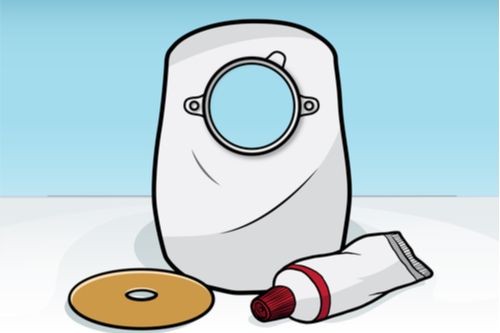
Ostomy procedures save lives by creating alternate means of waste elimination from the body.
While modern innovations and technology have improved ostomy appliances for today’s users, it is important to know the many choices available when it comes to ostomy collection systems.
We supplied our best tips and recommendations from our extensive ostomy research and experience to help new ostomates understand exactly what supplies they need for successful, safe, and hassle-free ostomy elimination and management every day.
If you liked this article and found it helpful, be sure to check out the rest of our buying guides and caregiving tips at Caregiver University.

Co-Founder of Rehabmart and an Occupational Therapist since 1993. Mike has spent his professional career working in multiple areas of Occupational Therapy, including pediatrics, geriatrics, hand therapy, ergonomics and inpatient / outpatient rehabilitation. Mike enjoys writing articles that help people solve complex therapeutic problems and make better product choices.